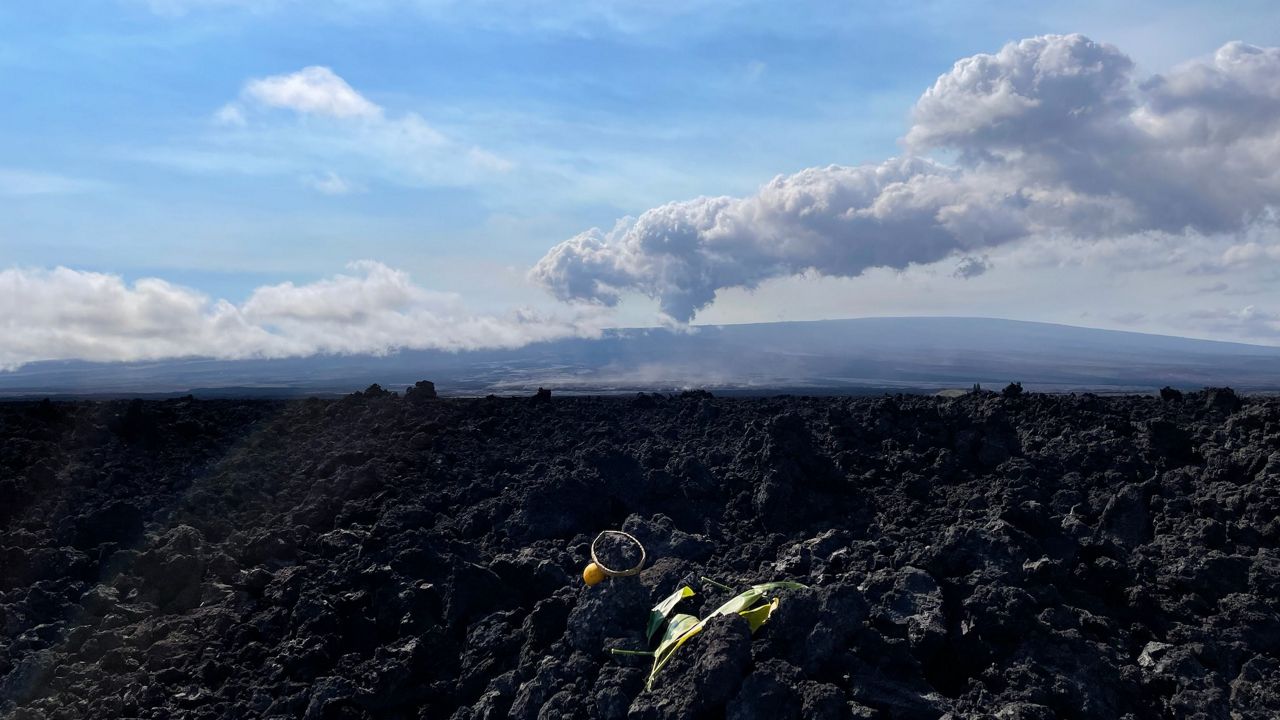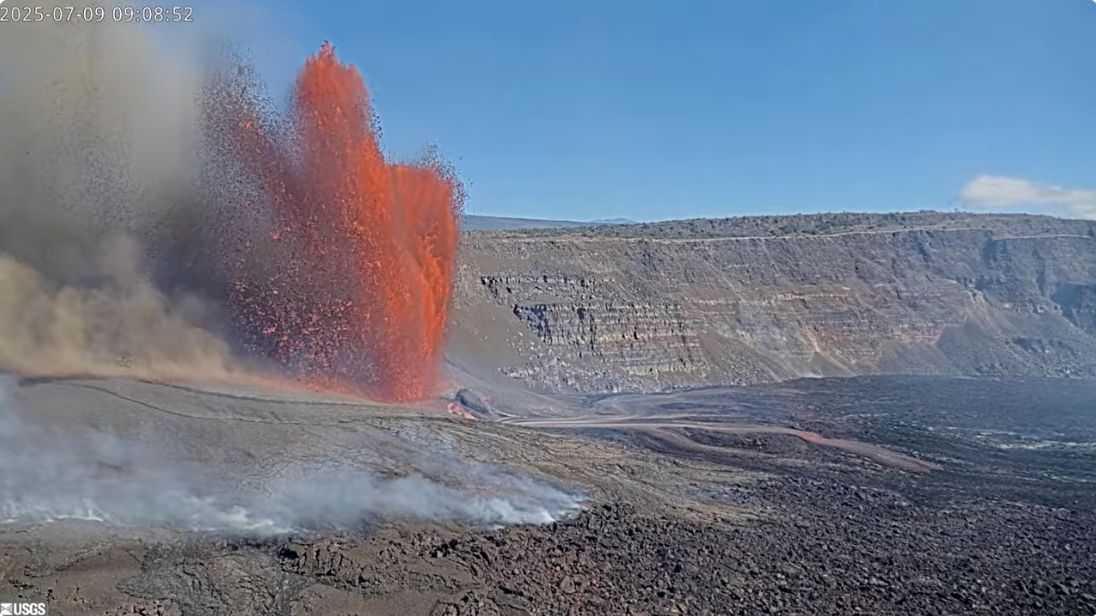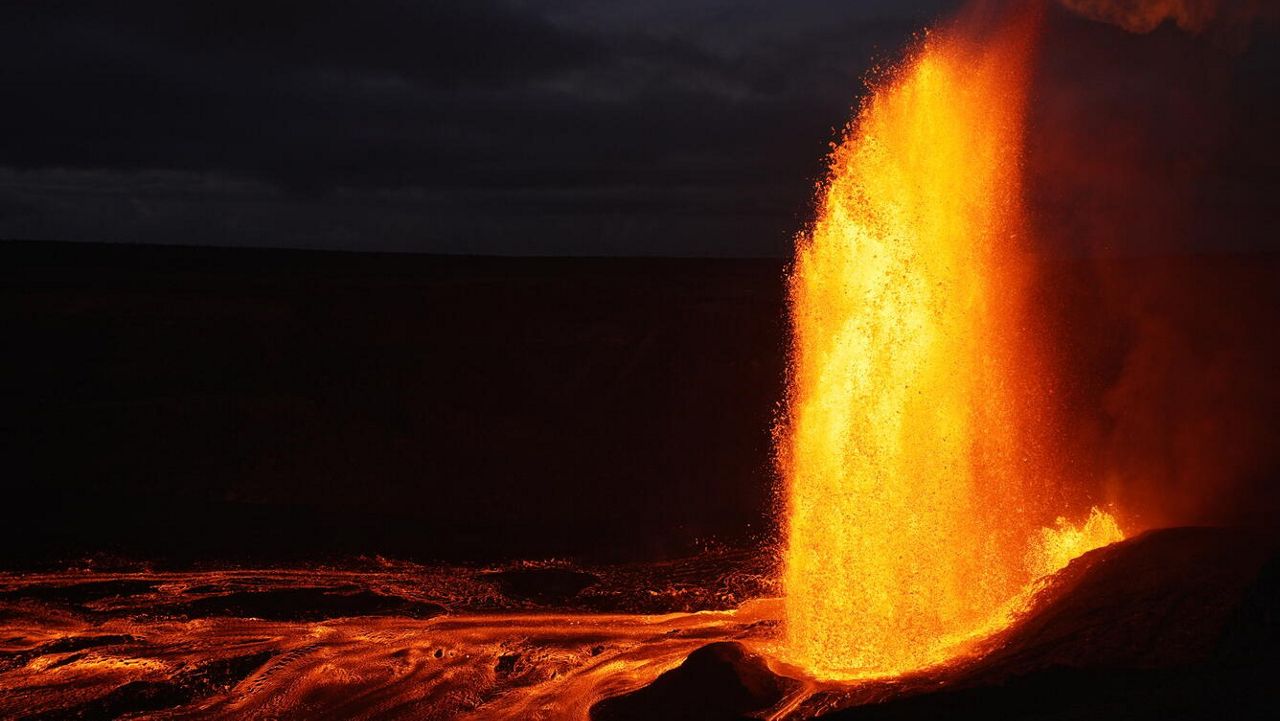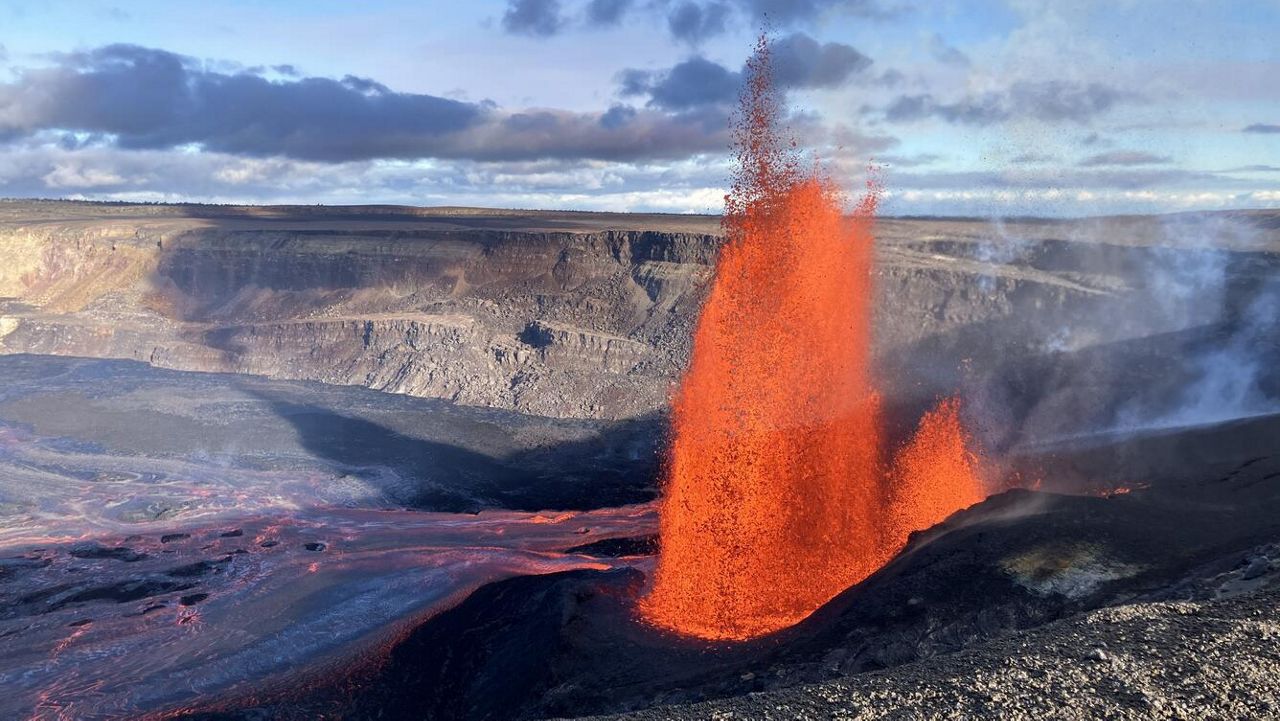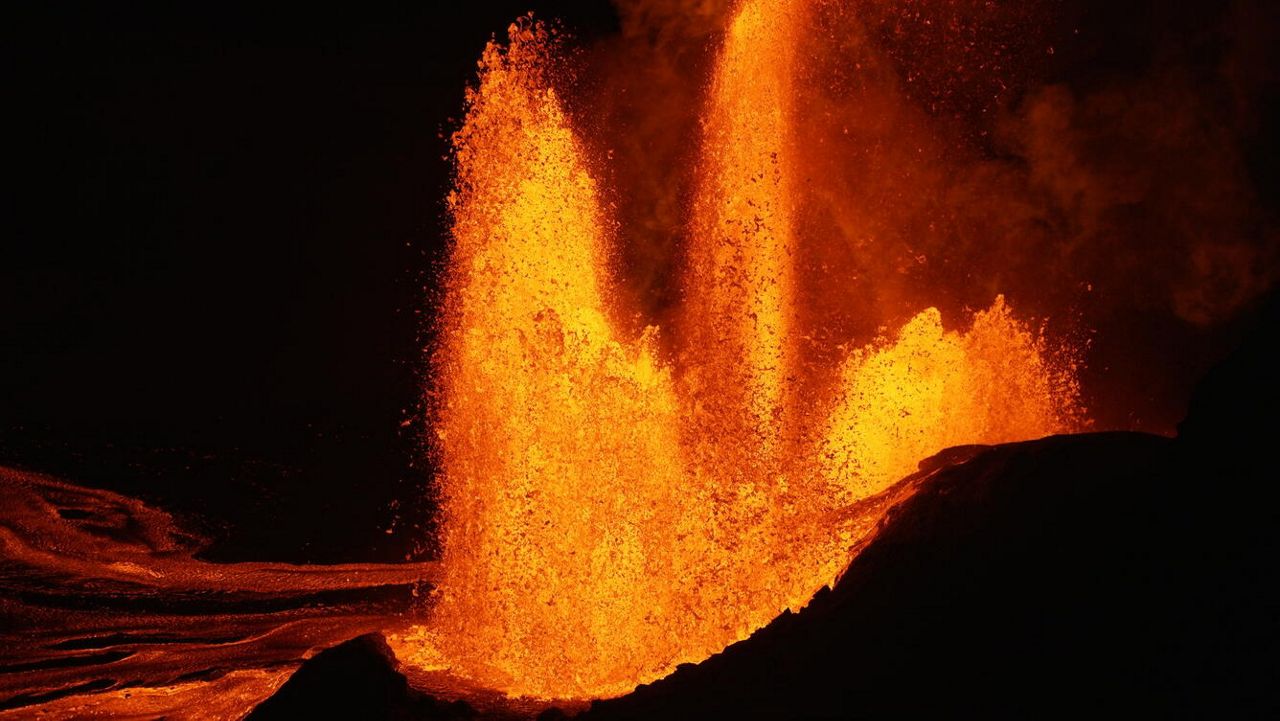HAWAII VOLCANOES NATIONAL PARK — On Monday, three members of the Spectrum News Hawaii team traveled to Hawaii Island to cover the Mauna Loa eruption.
Mauna Loa started erupting on Nov. 27 at about 11:30 p.m., the first time the volcano has erupted since 1984.
In order to get to the eruption, the team flew from Honolulu to Hilo, where they rented a car at the Hilo airport from Hertz.
Roxanne Longakit, a Hertz employee, told Spectrum News Hawaii that they had rented all their cars and Hertz has been very busy since the start of the eruption a week ago. She said one customer told her they planned to sleep in their car in order to watch the eruption all night.
“Just be careful,” Longakit added. “Don’t run across the street (to look at the lava). Somebody just got hurt.”
In order to get to the viewing area for Mauna Loa, we drove from Hilo along Saddle Road (also known as Daniel K. Inouye Highway) to the Gilbert Kahele Recreation Area. At the recreation area, we stopped to use the restrooms and refill our water bottles.
Jen Davies, who was visiting Hawaii Island from Oregon with 15 members of her family, talked to Spectrum News Hawaii while they were at the Gilbert Kahele Recreation Area, and said she was looking forward to seeing lava for the first time.
“We have heard that the volcano is a really spiritual thing for the people in the island, and we thought it would be a once-in-a-lifetime opportunity to come see it,” Davies said.
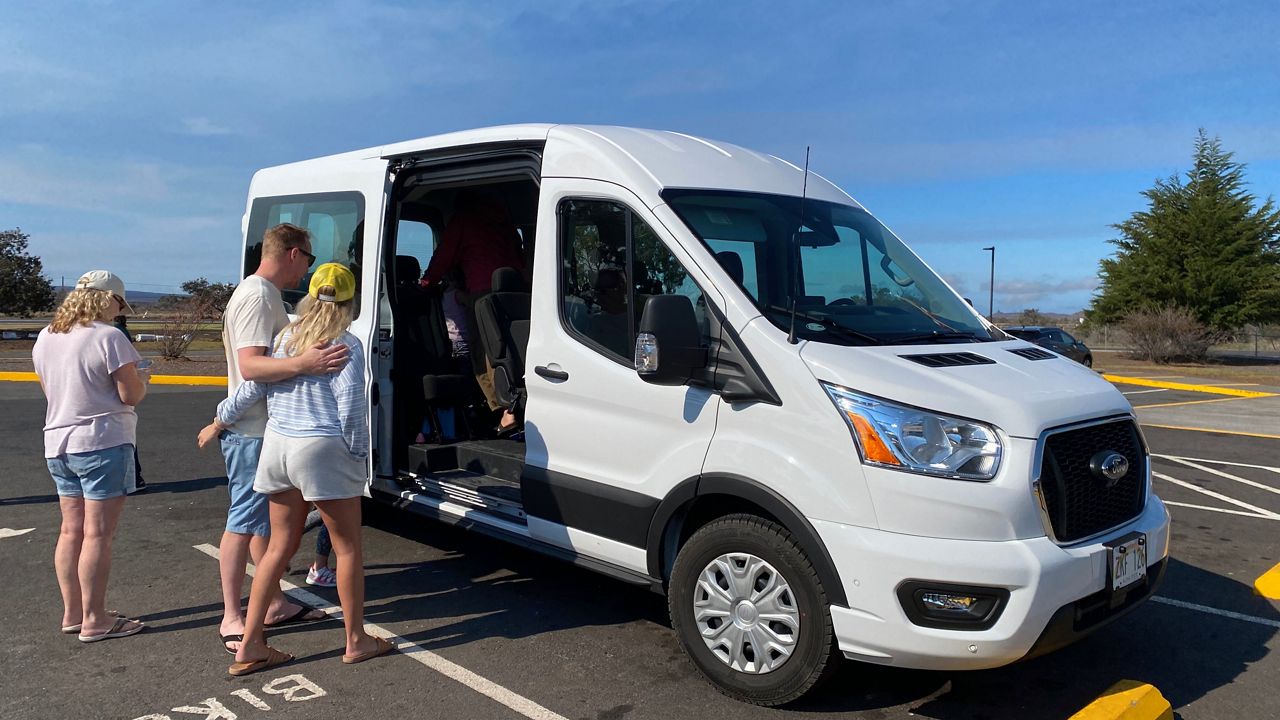
Across the street from the Gilbert Kahele Recreation Area, we entered Old Saddle Road. Hawaii County Mayor Mitch Roth opened Old Saddle Road in order to mitigate traffic that was piling up along Saddle Road, as people pulled over on the highway to glimpse the active eruption.
The newly opened 4.5 mile stretch of road allows people to drive in one-direction, letting out just west of Puu Huluhulu offers visitors a safer and closer view of the lava flow. From Old Saddle Road, visitors are less than 2 miles away from the active eruption. The best views are seen from the second half of the road.
The Department of Land and Natural Resources has warned people not to wander off Old Saddle Road, as the extremely hot lava may be a safety hazard and because the road crosses through Pohakuloa Training Area, which the U.S. military uses as a training base. On Sunday, an unexploded ordinance was discovered off of the road.
Eric Dumais was taking photos of the lava from Old Saddle Road when he told Spectrum News Hawaii that he had come from Seattle for just 36 hours to see the eruption for himself.
“I’ve been here a couple of times, and I’ve seen Kilauea erupting, and I’ve always been focused on feeling the land actually breathe on this island,” Dumais said. “There’s just an energy from Hawaii, and when Mauna Loa started erupting, I had to get out here.” At night, people can get the best view of the lava flow as it glows red, appearing like a river as it snakes down the mountain.
If it’s nighttime, conditions may get chilly, so bring a warm sweater or jacket. Shoes or boots are also helpful as the edge of the road is covered with jagged, hardened lava.
Next, we drove to Hawaii Volcanoes National Park to view both Kilauea and Mauna Loa erupting. We traveled back down Saddle Road to Hilo and then to Highway 11, which took us to Hawaii Volcanoes National Park. This drive took about an hour and a half.
Hawaii Island comprises five volcanoes: Mauna Loa, Kohala, Mauna Kea, Hualalai and Kilauea. Kohala is an extinct volcano. Mauna Kea is a dormant volcano. Hualalai is an active volcano, but it hasn’t erupted since 1801. Kilauea is the most active volcano on the island and it has been erupting since Sept. 29, 2021, when vents opened in Halemaumau, a crater in the volcano’s summit caldera.
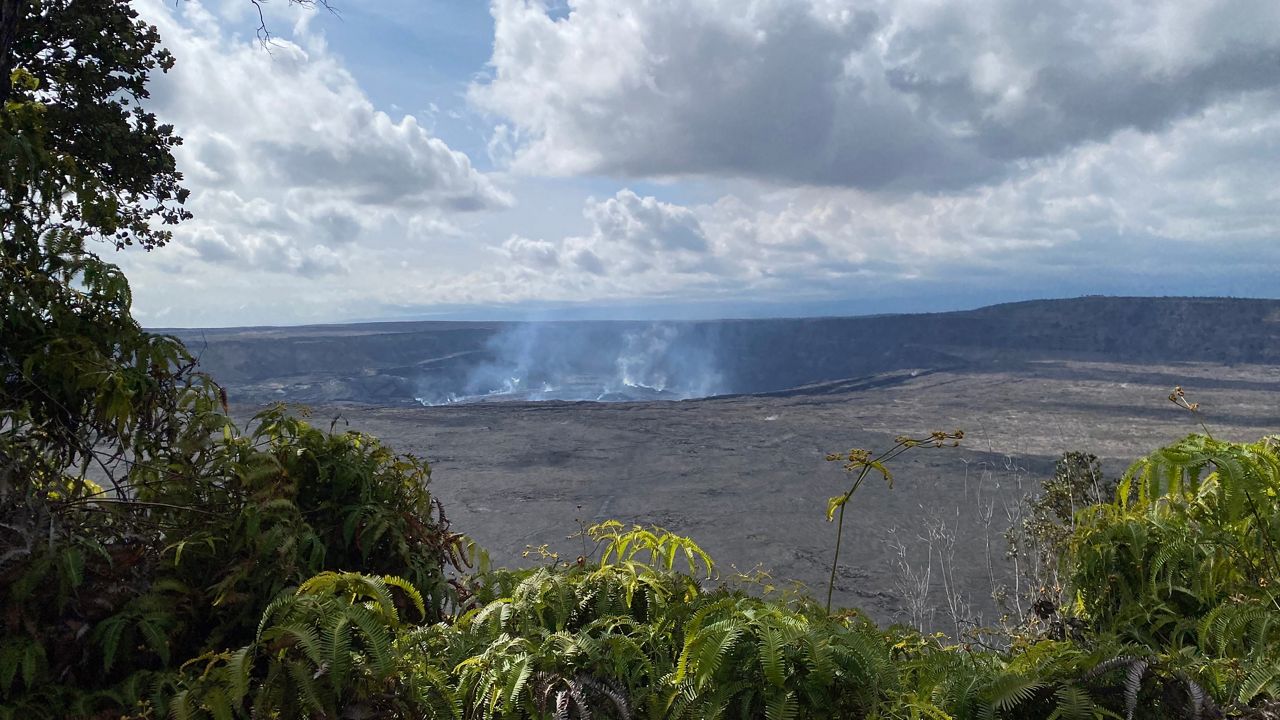
While standing at the viewing area for Halemaumau crater, visitors can also see the lava from Mauna Loa in the distance to the right. Unfortunately, while we were there, the overcast sky blocked the view of Mauna Loa. Again, the best viewing is at nighttime.
Jessica Ferracane, the communication specialist for the Hawaii Volcanoes National Park, told Spectrum News Hawaii that visitors should be cautious of hazards, such as Pele’s hair.
“Pele’s hair is one of the hazards that comes with active volcanoes here in Hawaii,” said Ferracane. “It’s lava droplets that have bubbled up from the eruption site and are captured by the wind and stretched out in fine, long filaments. It’s volcanic glass, basically. You don’t want to be breathing in that debris. It’s like breathing in a lung full of fiber glass — very, very dangerous.”
She also said visitors should be careful about volcanic gasses, such as sulfur dioxide, which can affect the air quality. Vog (volcanic smog) can be dangerous for people with respiratory issues, pregnant women and for infants and other small children. She recommended checking the park’s air quality map before visiting.
Ferracane also said people should be careful when driving, as the volcano viewing sites are spread out and people must travel a long distance to visit them.
“It’s easy to get distracted when you look over your shoulder and you see this giant volcano erupting or you see the glow from Kilauea. It’s really important for people to stay glued to the road and to be very alert when they’re driving,” Ferracane said.
Michelle Broder Van Dyke covers the Hawaiian Islands for Spectrum News Hawaii. Email her ideas and feedback at michelle.brodervandyke@charter.com.





